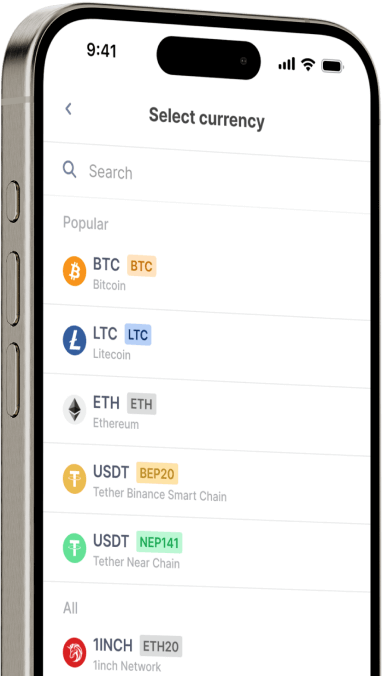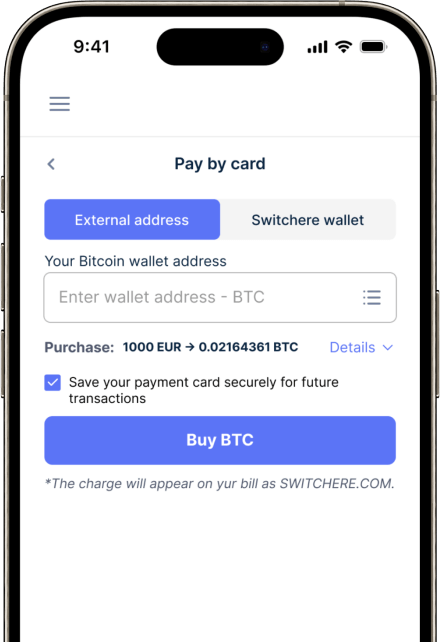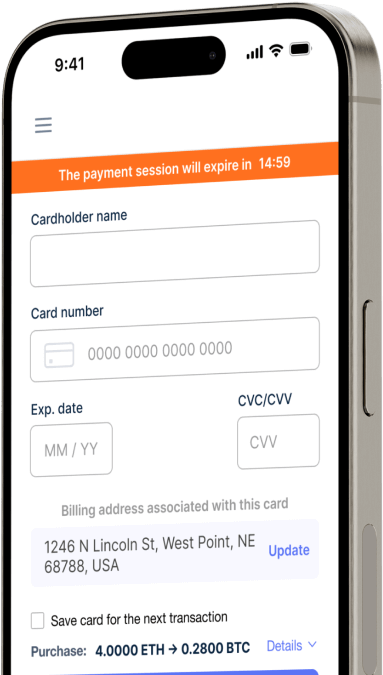전환하다
Brazilian Real (BRL)에서 Avalanche (AVAX)로 즉시
Switchere에서 Avalanche (AVAX)로 Brazilian Real (BRL)를 간편하게 구매하고 빠르고 안전한 거래의 혜택을 누리세요.
정보
Avalanche (AVAX)
아발란체(AVAX)는 확장성이 뛰어난 블록체인 기술 플랫폼으로, 탈중앙화 애플리케이션(dApp)을 호스팅하고 맞춤형 블록체인 네트워크를 쉽게 생성할 수 있도록 설계되었습니다. 주요 목적은 높은 처리량, 짧은 지연 시간, 강력한 탈중앙화를 제공하여 블록체인의 트릴레마를 해결하는 것입니다. 아발란체는 새로운 합의 메커니즘, 지분 증명(PoS) 기반에 구축된 프로토콜 제품군(스노우맨 등)을 통해 이를 달성하여 1초 미만의 트랜잭션 완결성을 가능하게 합니다. 따라서 까다로운 디파이 애플리케이션과 암호화 보안이 필요한 엔터프라이즈급 솔루션을 위한 매력적인 디지털 자산 인프라가 될 수 있습니다.
핵심적인 특징은 개발자가 자체 규칙, 가상 머신(C-Chain의 EVM 호환성 포함), 토큰노믹스를 가질 수 있는 맞춤형 애플리케이션별 블록체인을 출시할 수 있는 아발란체의 서브넷 아키텍처입니다. 이러한 서브넷은 독립적으로 운영되거나 기본 네트워크와 보안을 공유할 수 있습니다. 기본 유틸리티 토큰인 AVAX는 이 탈중앙화 네트워크 내에서 중요한 역할을 합니다. 거래 수수료를 지불하고, 검증자의 스테이킹을 통해 네트워크를 보호하며, 여러 서브넷에서 기본 계정 단위로 사용됩니다. 아발란체는 선도적인 레이어 1 스마트 컨트랙트 플랫폼으로 인정받고 있으며, 웹 3.0 인프라의 혁신을 주도하고 다양한 온체인 생태계를 육성하고 있습니다.
다른 150개 이상의 암호화폐를 Brazilian Real (BRL)에 구매하기
Brazilian Real (BRL)의 다른 코인
-
BRL에 대한 ZRX
-
BRL에 대한 1INCH
-
BRL에 대한 AAVE
-
BRL에 대한 ACH
-
BRL에 대한 ALGO
-
BRL에 대한 TLM
-
BRL에 대한 ANKR
-
BRL에 대한 APE
-
BRL에 대한 NFT
-
BRL에 대한 API3
-
BRL에 대한 APT
-
BRL에 대한 ARPA
-
BRL에 대한 AUDIO
-
BRL에 대한 AVAX
-
BRL에 대한 AVAX
-
BRL에 대한 AXS
-
BRL에 대한 BADGER
-
BRL에 대한 BAL
-
BRL에 대한 BNT
-
BRL에 대한 BAT
-
BRL에 대한 BNB
-
BRL에 대한 BSW
-
BRL에 대한 BSV
-
BRL에 대한 BLUR
-
BRL에 대한 BONE
-
BRL에 대한 CTSI
-
BRL에 대한 CELR
-
BRL에 대한 CELO
-
BRL에 대한 CEL
-
BRL에 대한 LINK
-
BRL에 대한 CHZ
-
BRL에 대한 CHR
-
BRL에 대한 C98
-
BRL에 대한 COMP
-
BRL에 대한 CFX
-
BRL에 대한 PEOPLE
-
BRL에 대한 CVX
-
BRL에 대한 ATOM
-
BRL에 대한 CTC
-
BRL에 대한 CRV
-
BRL에 대한 DAI
-
BRL에 대한 DASH
-
BRL에 대한 MANA
-
BRL에 대한 DENT
-
BRL에 대한 DGB
-
BRL에 대한 DYDX
-
BRL에 대한 XEC
-
BRL에 대한 EOS
-
BRL에 대한 ETC
-
BRL에 대한 ENS
-
BRL에 대한 ETHW
-
BRL에 대한 FET
-
BRL에 대한 FIL
-
BRL에 대한 FLOKI
-
BRL에 대한 GALA
-
BRL에 대한 GNO
-
BRL에 대한 ONE
-
BRL에 대한 HBAR
-
BRL에 대한 HOT
-
BRL에 대한 HOOK
-
BRL에 대한 ICX
-
BRL에 대한 ILV
-
BRL에 대한 IMX
-
BRL에 대한 INJ
-
BRL에 대한 ICP
-
BRL에 대한 IOST
-
BRL에 대한 IOTX
-
BRL에 대한 JASMY
-
BRL에 대한 JST
-
BRL에 대한 KAVA
-
BRL에 대한 KCS
-
BRL에 대한 KSM
-
BRL에 대한 KNC
-
BRL에 대한 LDO
-
BRL에 대한 LQTY
-
BRL에 대한 LPT
-
BRL에 대한 LOOKS
-
BRL에 대한 LRC
-
BRL에 대한 LUNA
-
BRL에 대한 MKR
-
BRL에 대한 MASK
-
BRL에 대한 EGLD
-
BRL에 대한 ALICE
-
BRL에 대한 NEAR
-
BRL에 대한 XEM
-
BRL에 대한 NEXO
-
BRL에 대한 NOT
-
BRL에 대한 NMR
-
BRL에 대한 OKB
-
BRL에 대한 OMG
-
BRL에 대한 ONT
-
BRL에 대한 EDU
-
BRL에 대한 OP
-
BRL에 대한 OGN
-
BRL에 대한 CAKE
-
BRL에 대한 PAXG
-
BRL에 대한 PENDLE
-
BRL에 대한 DOT
-
BRL에 대한 POL
-
BRL에 대한 QTUM
-
BRL에 대한 QNT
-
BRL에 대한 RDNT
-
BRL에 대한 XRD
-
BRL에 대한 RVN
-
BRL에 대한 REN
-
BRL에 대한 RSR
-
BRL에 대한 RLC
-
BRL에 대한 RPL
-
BRL에 대한 SFP
-
BRL에 대한 SHIB
-
BRL에 대한 SKL
-
BRL에 대한 SXP
-
BRL에 대한 STND
-
BRL에 대한 STG
-
BRL에 대한 XLM
-
BRL에 대한 GMT
-
BRL에 대한 STORJ
-
BRL에 대한 STMX
-
BRL에 대한 SUSHI
-
BRL에 대한 SNX
-
BRL에 대한 USDT (Polygon)
-
BRL에 대한 USDT (AVAC)
-
BRL에 대한 USDT (BEP20)
-
BRL에 대한 USDT (ERC20)
-
BRL에 대한 USDT (SPL)
-
BRL에 대한 USDT (NEP141)
-
BRL에 대한 USDT (FA2)
-
BRL에 대한 USDT (TRC20)
-
BRL에 대한 USDT (JETTON)
-
BRL에 대한 XTZ
-
BRL에 대한 GRT
-
BRL에 대한 SAND
-
BRL에 대한 TFUEL
-
BRL에 대한 THETA
-
BRL에 대한 RUNE
-
BRL에 대한 TON
-
BRL에 대한 TUSD (BEP20)
-
BRL에 대한 TUSD (TRC20)
-
BRL에 대한 TWT
-
BRL에 대한 UOS
-
BRL에 대한 UMA
-
BRL에 대한 UNI
-
BRL에 대한 USDC (Polygon)
-
BRL에 대한 USDC (SPL)
-
BRL에 대한 USDC (OP)
-
BRL에 대한 USDC (BEP20)
-
BRL에 대한 USDC (AVAC)
-
BRL에 대한 USDC (ARB)
-
BRL에 대한 USDC (ERC20)
-
BRL에 대한 VET
-
BRL에 대한 VRA
-
BRL에 대한 WAXP
-
BRL에 대한 WOO
-
BRL에 대한 WLD
-
BRL에 대한 WBTC
-
BRL에 대한 WMINIMA
-
BRL에 대한 XDC
-
BRL에 대한 YFI
-
BRL에 대한 YGG
-
BRL에 대한 ZIL
Avalanche (AVAX) 구매 방법
자주 묻는 질문
-
브라질 헤알(BRL)로 아발란체(AVAX)를 구매하는 가장 일반적인 방법은 무엇인가요?
BRL로 AVAX를 구매하는 가장 일반적인 방법은 법정화폐 온램프 역할을 하는 브라질 중심의 암호화폐 거래소를 이용하는 것입니다. 사용자는 일반적으로 KYC/AML 준수를 완료한 다음 Pix와 같은 즉시 결제 시스템이나 기존 은행 송금(TED)을 통해 BRL을 입금합니다. BRL이 입금되면 BRL/AVAX 오더북에서 거래를 체결하여 디지털 자산을 획득할 수 있습니다.
-
BRL에서 AVAX 거래와 관련된 일반적인 수수료는 얼마인가요?
BRL에서 AVAX로의 거래에는 몇 가지 잠재적인 수수료가 발생할 수 있습니다. 첫째, Pix를 통해 BRL을 입금하는 것은 많은 플랫폼에서 무료인 경우가 많지만 은행 송금에는 은행 수수료가 발생할 수 있습니다. 둘째, 암호화폐 거래소는 일반적으로 거래 금액의 일부에 해당하는 거래 수수료를 부과합니다. 마지막으로, 개인 디지털 지갑으로 AVAX를 출금할 때 일반적으로 다른 주요 스마트 컨트랙트 플랫폼보다 훨씬 낮은 Avalanche C-Chain에서 네트워크 가스 수수료를 지불하게 됩니다.
-
거래소에서 BRL을 AVAX로 변환할 때 어떤 보안 조치를 고려해야 하나요?
BRL에서 AVAX로 디지털 자산을 구매할 때는 현지 규정을 준수하는 거래소를 우선적으로 이용하세요. 계정에서 2단계 인증(2FA)을 활성화하고, 강력하고 고유한 비밀번호를 사용하며, 피싱 시도에 주의하는 등 필수 보안 수칙을 준수해야 합니다. 장기간 보유하려면 거래소에서 개인 키를 관리하는 비수탁 디지털 지갑으로 AVAX를 출금할 것을 적극 권장합니다.
-
아발란체 네트워크의 EVM 호환성이 BRL 기반 투자자에게 중요한 이유는 무엇인가요?
아발란치의 C-체인은 이더리움 가상머신(EVM)과 완벽하게 호환되며, 이는 큰 장점입니다. 이를 통해 개발자와 사용자는 익숙한 도구를 사용하여 탈중앙화 애플리케이션(dApp), 탈중앙화 금융 프로토콜, NFT 프로젝트의 방대한 생태계를 쉽게 포팅하고 상호 작용할 수 있습니다. BRL 투자자에게는 이미 알고 있는 강력한 dApp 환경을 떠나지 않고도 높은 처리량과 낮은 수수료의 환경에 직접 액세스할 수 있다는 의미입니다.
-
아발란체의 서브넷 아키텍처는 단순한 BRL/AVAX 거래 이상의 가치를 어떻게 제공하나요?
BRL/AVAX 거래가 시작점이지만, 토큰의 실제 활용은 생태계 내에서 이루어집니다. 아발란치의 고유한 서브넷 아키텍처를 통해 맞춤형 애플리케이션별 블록체인을 생성할 수 있습니다. 메인 네트워크를 보호하고 잠재적으로 이러한 서브넷을 검증하기 위해서는 AVAX 보유 및 스테이킹이 필수적이며, 보유자는 네트워크의 거버넌스 및 보안 프레임워크에서 합의 프로토콜의 핵심 원칙인 역할을 수행하게 됩니다.
-
거래 외에 BRL로 인수한 AVAX의 주요 사용 사례는 무엇인가요?
AVAX를 획득한 후에는 그 활용도가 거래 그 이상으로 확장됩니다. 주요 사용 사례로는 네트워크에서 거래 수수료 지불, 플랫폼 보안 및 보상 획득을 위한 AVAX 스테이킹, Avalanche 프로토콜의 거버넌스 참여 등이 있습니다. 또한, AVAX는 처리량이 많은 서브넷에 구축된 DeFi, 게임파이, 엔터프라이즈 솔루션의 번성하는 생태계와 상호작용하는 데 사용되는 기본 통화입니다.




